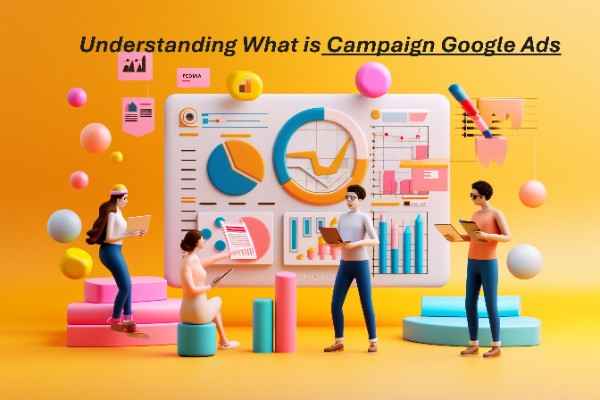What is Campaign Google Ads? Google Ads has revolutionized the way businesses reach their target audience, driving meaningful engagement and conversions. But when you hear the term “campaign” in the context of Google Ads, what exactly does it mean? This article explores the topic of “What are Google Ads campaigns?” and examines their importance, framework, and optimal strategies. By the end, you’ll not only understand the intricacies of Google Ads campaigns. But also why partnering with tech crrew can elevate your advertising game.
What is a Campaign in Google Ads?
A Google Ads campaign is fundamentally a collection of ad groups (which include ads, keywords, and bids) that share a common budget, location targeting, and various other settings. Campaigns are generally utilized to categorize the products or services you provide. For example, if you own a sporting goods store, you might have one campaign for running shoes and another for outdoor gear.
Each campaign serves as a container for your ads, allowing you to control how your budget is spent and where your ads appear. Whether you’re targeting specific geographical locations, particular devices, or aiming to achieve certain business goals (like increasing website traffic or generating leads), your Google Ads campaign is the strategic hub where all these decisions are made.
Why is it Called a Campaign?
The term “campaign” is borrowed from traditional marketing, where it refers to a coordinated series of advertisements designed to achieve a particular goal. In the context of Google Ads, a campaign is a cohesive strategy that allows businesses to target specific audiences with tailored messages. Just like a military campaign is a series of operations intended to achieve a goal, a Google Ads campaign involves various tactics to conquer the digital marketplace.
Your campaign in Google Ads isn’t just about running ads; it’s about organizing and executing a strategy that aligns with your broader marketing objectives. The structure and flexibility of campaigns allow advertisers to test different approaches, measure their success, and adjust strategies accordingly.
How Many Ads Per Day Should I Run?
The number of ads you should run per day depends on several factors, including your budget, target audience, and business goals. However, it’s important to note that Google Ads doesn’t restrict you to a specific number of ads per day. Instead, it focuses on how often your ads are shown (impressions) and how much you’re willing to pay per click (CPC).
Running multiple ads within a campaign can be beneficial. Here’s why:
- A/B Testing: By running different versions of an ad, you can test which one performs better. This is crucial for refining your messaging and improving click-through rates (CTR).
- Audience Segmentation: Different ads can target different segments of your audience, ensuring that your message resonates with diverse groups.
- Ad Fatigue: Showing the same ad repeatedly can lead to ad fatigue, where users become so accustomed to seeing your ad that they start ignoring it. Rotating multiple ads helps prevent this.
Google’s algorithm will automatically optimize for the best-performing ads, so having a variety is often more advantageous than sticking to just one. However, it’s vital to monitor performance closely and adjust as needed.
How Many Google Ads Campaigns Should I Run?
The number of Google Ads campaigns you should run largely depends on the complexity of your business, your budget, and your marketing objectives. Here are some guidelines:
- Product or Service Lines: If you offer multiple products or services, consider running separate campaigns for each. This enables you to customize your advertisement text, keywords, and targeting for every product offering..
- Geographical Targeting: If you serve different regions, you might want to create campaigns for each area. This lets you customize your messaging based on local preferences and competition.
- Seasonal Campaigns: If your business has seasonal peaks, running campaigns specifically for those times can help you maximize your reach and ROI.
- Remarketing: Setting up a dedicated campaign for remarketing—targeting users who have previously interacted with your website or app—can be a highly effective way to bring back potential customers.
Remember, managing too many campaigns can become cumbersome. It’s essential to balance the number of campaigns with your ability to monitor and optimize them effectively.
The Importance of a Well-Structured Campaign
A well-structured campaign is the cornerstone of a successful Google Ads strategy. Poorly organized campaigns can lead to wasted budgets, missed opportunities, and underwhelming results. Here’s what a well-structured campaign should include:
- Clear Objectives: What do you want to achieve? Is it more traffic, higher sales, or brand awareness? Define this clearly from the outset.
- Targeted Keywords: Choose keywords that align with your goals and target audience. Use tools like Google Keyword Planner to research and select the best options.
- Effective Ad Copy: Craft compelling ad copy that speaks directly to your audience’s needs and pain points. Include a strong call to action (CTA).
- Smart Budgeting: Allocate your budget in a way that maximizes your ROI. This might involve setting different budgets for different campaigns or ad groups.
- Continuous Optimization: Regularly monitor your campaign’s performance and make adjustments as needed. This may require modifying your advertisement text, changing your bids, or enhancing your targeting..
Conclusion:
Crafting, managing, and optimizing Google Ads campaigns can be complex, especially if you’re aiming for high-impact results. So That’s where tech crrew comes in. Our team of experts will work with you to create tailored campaigns that align with your business goals, ensuring maximum ROI. We bring industry insights, cutting-edge strategies, and a commitment to your success.
Don’t leave your digital advertising to chance. Contact tech crrew today to take your Google Ads campaigns to the next level. Let us help you achieve your marketing objectives and grow your business online.

